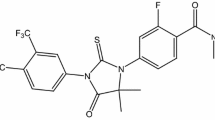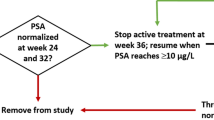Abstract
A nonlinear model is proposed for testosterone (T) transport and metabolism in the normal adult male. The model structure consists of 2 pools: one which includes plasma distribution, direct disposal, and the binding ofT to three plasma proteins; and a second pool for distribution and other disposal ofT. Nonlinearities in the model are manifest in the mass action law dynamics of binding to plasma proteins.
A directed random search algorithm was employed to estimate model parameters. The model was fitted to real data by minimization of the least squares output error. The real data consisted of discrete samples of radioactively labeledT in blood following a rapid, pulse injection of labeledT.
A quadratic approximation for unboundT in terms of totalT concentration was derived by application of the mass action principle to the multiple hormone-protein binding relationships. This approximation permitted the two model state variables to be expressed as totalT concentration in each pool. This choice guarantees a linear measurement or output model.
The model was completely quantified, including a relationship and estimate for the unmeasurable concentration ofT in the lumped intracellular space. These results indicate that: (1) 98% ofT is cleared directly from plasma; (2) the lumped phase boundary between the intra- and extravascular spaces is nearly isotropic toT; and (3) the average steady state intracellular totalT concentration is only 30% of the corresponding plasma totalT concentration in normal man.
The predictive value of the model also was explored by performing three simulated experiments, each representing pathologic possibilities. When simulatedT secretion was decreased by 75%, the plasmaT decreased by 70%. When simulated protein concentrations were changed significantly, in opposite directions, the plasmaT concentration fell well below the normal level; but theT concentration in the outer pool remained normal. When the parameter representing transport ofT to the outer pool was decreased, plasmaT did not change, but the outer poolT decreased. Among other things, these results suggest that the plasmaT concentration does not always reflect changes in distribution and disposal; and plasma totalT concentration is not by itself a reliable indicator of system pathologies. Also, low plasmaT concentration and normalT secretion can be consistent with normal concentrations ofT in tissue and hence the target organs for testosterone action.
Similar content being viewed by others
Abbreviations
- [AL]:
-
Concentration of unbound albumin in the inner pool,M
- [AT]:
-
Concentration of albumin-boundT in the inner pool,M
- [CBG]:
-
Concentration of unbound corticosteroid binding globulin in the inner pool,M
- C i :
-
Irreversible clearance rate of unboundT from the inner pool, L/min
- C io :
-
Transfer clearance rate of unboundT from inner to outer pools, L/min
- C o :
-
Irreversible clearance rate of totalT from the outer pool, L/min
- C oi :
-
Transfer clearance rate of totalT from outer to inner pools, L/min
- [CT]:
-
Concentration of CBG-boundT in the inner pool,M
- e(t k ):
-
Output error at timet k ,k=1,2,...
- K a :
-
Equilibrium association constant for albumin-boundT,M −1
- K c :
-
Equilibrium association constant for CBG-boundT,M −1
- K s :
-
Equilibrium association constant for SBP-boundT,M −1
- MCR :
-
Metabolic clearance rate, L/min
- R :
-
Amount of radioactively labeledT injected for a single injection study, moles
- [SHBG]:
-
Concentration of unbound sex hormone-binding globulin in the inner pool,M
- T :
-
Testosterone
- [TI]:
-
Concentration of totalT in the inner pool,M
- [TO]:
-
Concentration of totalT in the outer pool,M
- [TOTA]:
-
Concentration of total albumin in the inner pool,M
- [TOTC]:
-
Concentration of total CBG in the inner pool,M
- [TOTS]:
-
Concentration of total SHBG in the inner pool,M
- [UT]:
-
Concentration of unbound (free)T in the inner pool,M
- V i :
-
Volume of inner pool, L
- V o :
-
Volume of outer pool, L
- y(t k ):
-
Molar concentration of total observableT in plasma at timet k ,M
- z(t k ):
-
Molar concentration of injected radioactively labeledT in plasma at timet k ,M
- []:
-
d[]/dt, time rate of change of concentration,M/min
- [] IC :
-
Concentration at initial condition,M
- [] ss :
-
Steady state concentration,M
References
Baulieu, E. E., Raynaud, J. P., andMilgrom, E. Measurement of steroid binding proteins.ACTA Endocrinologica Supplement 1970,147, 104–121.
Baulieu, E. E., andRobel, P. Catabolism of testosterone and androstenedione. In K. B. Eik-Nes (Ed.),The androgen of the testis. New York: Marcel Dekker, 1970.
Baird, D. T., Horton, R., Longcope, C., andTait, J. F. Steroid dynamics under steady-state conditions.Recent Progress in Hormone Research 1969,25, 611–664.
Bird, C. E., Green, R. N., Calandra, R. S., Connally, J. G., andClark, A. F. Kinetics of 3H-testosterone metabolism in patients with carcinoma of the prostate: effects of oestrogen administration.ACTA Endocrinologica 1971,67, 733–739.
DiStefano, III, J. J., andChang, R. F. Computer simulation of thyroid hormone binding, distribution, and disposal dynamics in man.American Journal of Physiology 1971,221, 1529–1544.
DiStefano, III, J. J., Wilson, K. C., Jang, M., and Mak, P. H. Identification of the Dynamics of Thyroid Hormone Metabolism.Automatica (in Press).
Eik-Nes, K. B. Synthesis and secretion of androstenedione and testosterone. In K. B. Eik-Nes (Ed.),The androgen of the testis, New York: Marcel Dekker, 1970.
Horton, R., andTait, J. F. Androstenedione production and interconversion rates measured in peripheral blood and studies on the possible site of its conversion to testosterone.Journal of Clinical Investigation 1966,45, 301–313.
Horton, R., Shinsako, J., andForsham, P. H. Testosterone production and metabolic clearance rates with volumes of distribution in normal adult men and women.ACTA Endocrinologica 1965,48, 446–458.
Lindsay, D. G., Grover, P., and Odell, W. D. Post-Castration Kinetics for Rat Cytosol Receptor Proteins for Testosterone and Dihydrotestosterone (in Press).
Tait, J. F., Tait, S. A. S., Little, B., andLaumas, K. R. The disappearance of 7-H3-d-aldosterone in the plasma of normal subjects.Journal of Clinical Investigation 1961,40, 72–80.
Vermeulen, A., andVerdonck, L. Studies on the binding of testosterone to human plasma.Steroids 1968,11, 609–635.
Wozny, J. J., andHeydt, G. T. Hyperconical random search.Journal of Dynamic Systems, Measurement, and Control 1972,94, 71–78.
Author information
Authors and Affiliations
Rights and permissions
About this article
Cite this article
Mayekawa, M.T., DiStefano, J.J. & Swerdloff, R.S. A dynamic system model of testosterone transport and metabolism in normal man. Ann Biomed Eng 2, 307–320 (1974). https://doi.org/10.1007/BF02368500
Received:
Issue Date:
DOI: https://doi.org/10.1007/BF02368500




